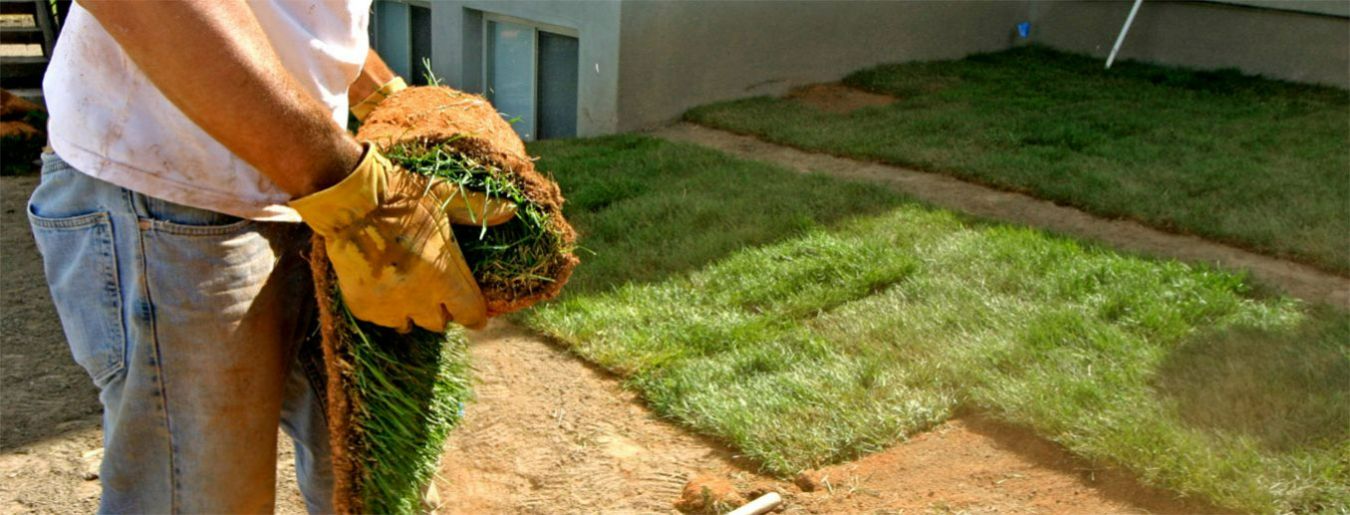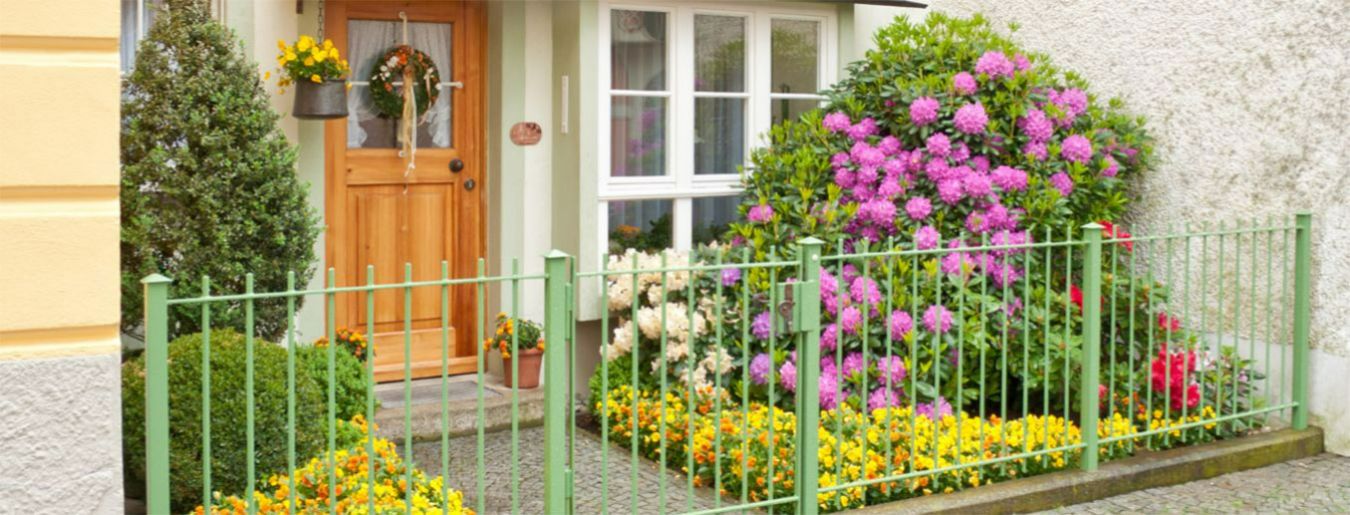There are two main contributors to bad landscaping: poor planning and negligent maintenance. If you work with a qualified landscape designer and stay committed to maintaining your trees, shrubs, grass, and flowers, you can avoid 99% of the most common landscaping mistakes.
If you’re looking to update your home’s overgrown or outdated landscaping, here are some specific landscape design mistakes to steer clear of.
1. Building a space with inadequate drainage
Healthy lawns and gardens need adequate drainage. Several poor design choices can inhibit the flow of water. Overpacked soil, walls and berms, and thoughtless planning that puts a garden at the base of a slope can all contribute to poor drainage.
Some plants can be forgiving of too much water. In fact, a rain garden features a collection of plants that are expressly chosen for their ability to thrive in wet environments. But the typical garden, more often than not, will drown if water can’t freely permeate the ground.
Work with a landscape designer to determine the ideal spots for planting. If drainage is a persistent problem, consider a French drain or rain garden.

Get Home Warranty Quotes
from Top Rated Authorized
Partners
Get a Quote
2. Planting invasive or damaging plants
Some plants have no business being in your lawn or garden. Many species of invasive plants, from bittersweet to bamboo to the tree of heaven, can outcompete your native plants and overtake your yard. Invasive plants can girdle your trees, outgrow other plants and deny them much needed sun, sap up water and nutrients from the soil, or take root in new and unwanted locations faster than you can remove them.
Research invasive plants in your area and keep them off your property as best you can. Also avoid native plants that can damage your home. Ivy, for example, can creep into small fissures and cause cosmetic or structural damage over time. As a general rule, you shouldn’t plant anything too close to your home.
3. Overcrowding your garden beds
Overplanting is a common landscaping mistake. People tend to buy seeds or small plants, not anticipating how large the mature plants will be. If you plant immature trees, shrubs, and bushes too close together, your lawn will later look crowded and messy. Your plants will also be forced to compete for water and nutrients, leading to stunted growth or dead plants.
4. Ignoring underground infrastructure
Don’t forget about the abundance of infrastructural materials beneath your property. There can be gas lines, water and sewer pipes, underground wiring, pumps, wells, septic tanks, and more. Repairing broken lines, pipes, and underground equipment can cost thousands of dollars.
You should be mindful of underground infrastructure when you’re breaking ground to plant trees, shrubs, and bushes, but also consider how plant root systems will grow. As a young tree matures, for instance, its roots will seek out the warmth and moisture of a sewer pipe, and steady growth over time can break or obstruct the pipe.
A property survey can alert you to critical underground infrastructure beforehand.
5. Undermaintaining your property
Quality landscaping requires a lot of upkeep. You’ll need to cut the grass, weed the garden beds, and trim hedges, bushes, and shrubs throughout the growing season. Once a year, you should spread mulch and cut back branches. You’ll have to periodically fertilize your plants, repair stonework, and collect dead leaves and debris.
There are ways to limit your maintenance obligations. No-shrub landscaping, for instance, can keep you from needing to shape and prune woody plants. In your backyard or front yard landscape, no-grass designs will eliminate the need to mow throughout the spring and summer. Discuss your needs with a landscape designer to make a plan that works for you.
6. Neglecting the local wildlife
Local animals can dash your hopes of a beautifully landscaped home. Think ahead of time about the creatures that might make a meal out of your vegetables, flowers, and ornamental plants. Deer, rabbits, squirrels, caterpillars, beetles, aphids, and other pests are bound to intrude on your property.
Some plants can deter certain kinds of pests. Also consider fences or natural barricades to keep animals out.
7. Making your patio too small
It’s easy to underestimate how much space your family will require for a comfortable outdoor space. A 10-foot by 10-foot area is as small as you should go. This will comfortably fit a small dining table or a few pieces of outdoor furniture. If you have a larger family, plan on entertaining often, or want to install outdoor cooking equipment, plan for a patio that is considerably larger.
8. Not working with the natural features of your property
Appreciate the natural beauty of your space. Don’t cut down healthy trees to plant ornamental grasses. Integrate existing boulders and stones into your landscaping. Work with a landscape specialist to use the natural topography of your property and plant shrubs, grasses, trees, bushes, and flowers in places that best suit their needs for water and sun. Use your landscaping to highlight or frame interesting features of your property.
9. Overcrowding your property with lawn ornaments
Tasteful lawn ornaments have their place. Overdoing it, however, often makes a lawn look crowded and tacky. Aim to highlight plants, stone, and other natural materials. Too many signs and statuettes detract from your property’s natural beauty.

Let us find the
Best Home Warranty Provider
for your Home's Needs
10. Choosing plants or design styles that are not appropriate for your location
Remember to design your garden and landscaping in a manner that is befitting of where you live. If you live in the desert, thirsty grasses and fruit trees are not wise planting choices. Consider your soil quality too. If you have dense clayey soil, plants that thrive in sandy soil, such as lavender, won’t do well.
Embrace the prevailing style of where you live. A patio modeled after a Tuscan villa looks out of place in the Midwest. While you should ultimately choose a design style that matches your personal aesthetic, consider how your choices may turn off buyers when it’s time to sell your home.



 Prev Post
Prev Post



